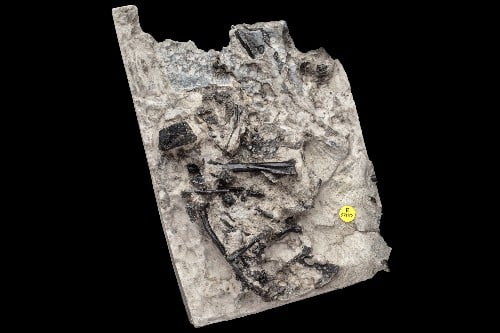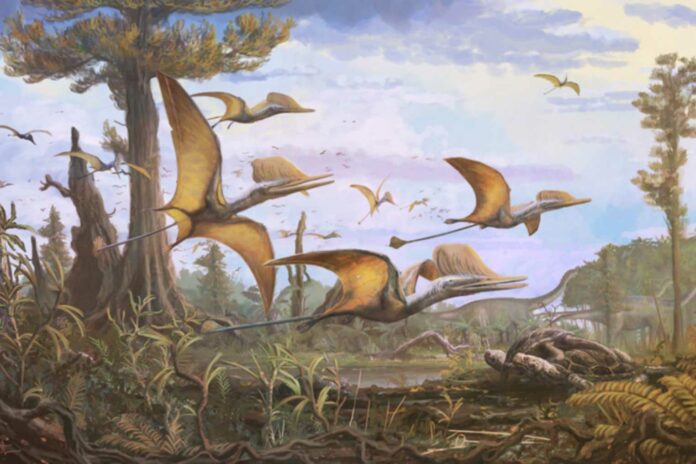During the Middle Jurassic period, significant changes occurred in the evolution of pterosaurs, a group of flying reptiles. These changes led to new features that allowed different branches of pterosaurs to thrive and diversify. However, our understanding of this crucial time is limited because the fossil record from this period mainly consists of incomplete and fragmented remains.
A team of scientists from the University of Bristol Natural History Museum, University of Leicester, and University of Liverpool discovered a new pterosaur species on the Isle of Skye, Scotland.
This new pterosaur belongs to a group called Darwinoptera, showing that this group was more diverse and lasted longer than previously thought. They existed for over 25 million years, from the late Early Jurassic to the latest Jurassic, and spread worldwide during this time.
The discovery of this new species helps better understand pterosaurs’ early evolution. Before, it was hard to learn about them because very few fossils from the Middle Jurassic period often needed to be completed. But now, it became clear that all principal pterosaur groups appeared before the end of the Early Jurassic, earlier than previously known. Scientists also found out that pterosaurs lived alongside avialans, dinosaurs that later became birds, until the latest Jurassic.

The fossils found on the Isle of Skye are only a partial skeleton of one individual. They include parts of the shoulders, wings, legs, and backbone. Many bones are still inside rocks and can only be studied using CT-scanning technology.
The new species is called Ceoptera evansae. “Ceoptera” comes from the Scottish Gaelic word “Cheò,” meaning mist, which refers to the common name for the Isle of Skye, Eilean a’ Cheò, or Isle of Mist. “Evansae” honors Professor Susan E. Evans for her many years of research in anatomy and paleontology, especially on the Isle of Skye.
Lead author Dr. Liz Martin-Silverstone, a palaeobiologist in the University of Bristol’s School of Earth Sciences, said: “The time period that Ceoptera is from is one of the most important periods of pterosaur evolution and is also one in which we have some of the fewest specimens, indicating its significance. To find that there were more bones embedded within the rock, some of which were integral in identifying what kind of pterosaur Ceoptera is, made this an even better find than initially thought. It brings us one step closer to understanding where and when the more advanced pterosaurs evolved.”
Professor Paul Barrett, Merit Researcher at the Natural History Museum and senior author on the paper said: “Ceoptera helps to narrow down the timing of several major events in the evolution of flying reptiles. Its appearance in the Middle Jurassic of the UK was a complete surprise, as most of its close relatives are from China. It shows that the advanced group of flying reptiles it belongs to appeared earlier than we thought and quickly gained almost worldwide distribution.”
Journal Reference:
- Dr. Liz Martin-Silverstone, Paul Barrett, et al. A new pterosaur from the Middle Jurassic of Skye, Scotland and the early diversification of flying reptiles is published in the Journal of Vertebrate Paleontology. Journal of Vertebrate Paleontology. DOI: 10.1080/02724634.2023.2298741
